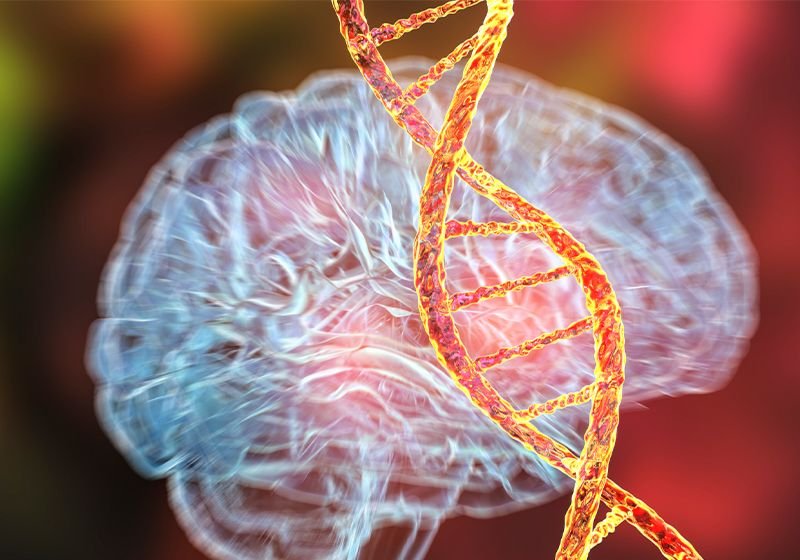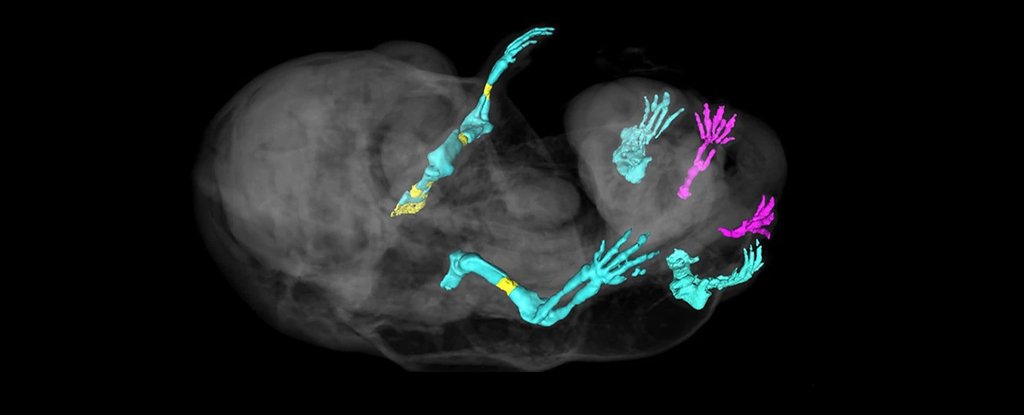Stefan Pulst, a neurologist at the University of Utah, sees hundreds of patients each year with puzzling brain diseases. But 15 years ago, he met a patient whom he thought could be the key to solving a decade-long mystery.
The patient had spinocerebellar ataxia type 4 (SCA4), a progressive neurodegenerative disease that causes muscle weakness, movement difficulty, and loss of sensation in hands and feet. Despite being part of a group of more than 40 SCA conditions, “SCA4 has stood out like a sore thumb for quite some time,” said Peter Todd, a neurologist at the University of Michigan who is not a collaborator of Pulst’s. Its genetic cause has evaded more than two decades of studies.
Another research group at the University of Utah traced SCA4’s genetic basis to a region on the long arm of chromosome 16 in 1996.1 But subsequent studies all failed to pin down the exact genetic mutation that caused SCA4. Even DNA from Pulst’s 2009 patient couldn’t crack the mystery.
Now, bolstered by technological advances and partnerships with families affected by the disease, Pulst’s team has finally nailed down the mutation that causes SCA4. For a study published in Nature Genetics, they used single-strand long-read DNA sequencing to find a repeating sequence that appears many more times in people with SCA4.2 In the span of a few months, reports from three other research groups implicated the same mutation in SCA4.3-5

Although Pulst was careful to note that this doesn’t yet point to a cure, the study lays a foundation for better diagnosis and understanding of how neurons go haywire in SCA4. “That’s why it’s important to find genes,” he said. “We can now clearly tell a patient, ‘You have the SCA4 mutation.’”
Geneticists searching for the SCA4 mutation were stumped for years by the region of interest on chromosome 16. It was particularly tricky to probe with conventional sequencing technologies because it was full of repeating sequences that most analysis software would ignore when stitching short sequencing reads together. The region’s abundance of guanine (G) and cytosine (C) nucleotides also meant that the DNA strands were tightly locked together, making it challenging to amplify the problematic DNA for follow-up analyses. But with long-read sequencing, which can scan whole repeating stretches of DNA in one pass, Pulst finally found a tool that was up to the task.
In the new study, his team used a high-fidelity single-strand long-read sequencing method that could easily navigate the repeats and GC-rich regions.6 When they sequenced members of a Utah family with and without SCA4, the researchers found an intriguing pattern of repeating GGC nucleotides in the zinc finger homeobox 3 (ZFHX3) gene, which encodes a transcription factor previously implicated in developmental disorders.7 People without SCA4 typically had 21 GGC repeats, but people with SCA4 had as many as 74 repeats.
“[The study] points to dark regions of the genome that harbor mutations that can only be identified with novel technologies,” Pulst said.
This type of mutation, called repeat expansion, is a relatively common driver of neurodegenerative diseases. The most famous example is Huntington’s disease. Pulst was surprised to find that in SCA4, the repeats occurred in a part of the gene that instructs cells to insert additional glycine amino acids into the ZFHX3 protein, which is not typical for repeat expansion-driven diseases. Although the researchers didn’t identify the exact mechanism, their experiments in stem cells and fibroblasts revealed that the mutation somehow impedes cells’ efforts to break down cellular debris through autophagy.
Further work to understand the mechanism by which the mutation causes SCA4 will be a necessary next step, according to Clévio Nóbrega, a neuroscientist at the University of Algarve who was not involved in the research. “This [study] is an advance, but it does not change the fact that the SCA4 is still incurable,” Nóbrega said. To focus on more disease-relevant cell types, Pulst’s team is currently extending their studies to neurons generated from SCA4 patients’ stem cells.
When it comes to developing new therapies, Pulst is cautious. Although his team is exploring antisense oligonucleotides that can halt the production of faulty proteins, “It’s still a very long road,” he said, pointing to conditions like Huntington’s disease, where the genetic mutation is known but no effective drugs have emerged.
However, patients may see the benefits of this genetic discovery soon. According to Pulst, knowing the mutation responsible for SCA4 should accelerate diagnoses because clinicians can now explicitly test for this mutation. Todd, who was not involved in the current study, is part of a team that recently proposed a platform to use long-read sequencing for genetic diagnosis of repeat-expansion-driven ataxias;8 his team has already incorporated the SCA4 mutation into their battery of tests.
Two other neurodegenerative conditions, fragile X-associated tremor/ataxia syndrome and neuronal intranuclear inclusion disease, also have GGC repeat expansions, and other forms of ataxias have other types of repeat expansions. Todd suspects that finding common threads across these diseases might help explain how repeat expansions cause brain diseases.
“I see patients with ataxias, and quite frankly, it’s a little frustrating right now because I have a lot of patients for whom we don’t have a diagnosis,” Todd said. “I hope that further identification will help shape the landscape of these diseases.”
References
1. Flanigan K, et al. Autosomal dominant spinocerebellar ataxia with sensory axonal neuropathy (SCA4): Clinical description and genetic localization to chromosome 16q22.1. Am J Hum Genet. 1996;59(2): 392–399.
2. Figueroa KP, et al. A GGC-repeat expansion in ZFHX3 encoding polyglycine causes spinocerebellar ataxia type 4 and impairs autophagy. Nat Genet. 2024.
3. Wallenius J, et al. Exonic trinucleotide repeat expansions in ZFHX3 cause spinocerebellar ataxia type 4: A poly-glycine disease. Am J Hum Genet. 2024;111(1):82-95.
4. Chen Z, et al. Adaptive long-read sequencing reveals GGC repeat expansion in ZFHX3 associated with spinocerebellar ataxia type 4. Mov Disord. 2024;39(3):486-497.
5. Paucar M, et al. Spinocerebellar ataxia type 4 is caused by a GGC expansion in the ZFHX3 gene and is associated with prominent dysautonomia and motor neuron signs. medRxiv. 2023.
6. Wenger AM, et al. Accurate circular consensus long-read sequencing improves variant detection and assembly of a human genome. Nat Biotechnol. 2019;37(10):1155-1162.
7. Pérez Baca MDR, et al. Haploinsufficiency of ZFHX3, encoding a key player in neuronal development, causes syndromic intellectual disability. Am J Hum Genet. 2024;111(3):509-528.
8. Van Deynze K, et al. Enhanced detection and genotyping of disease-associated tandem repeats using HMMSTR and targeted long-read sequencing. medRxiv. 2024.










